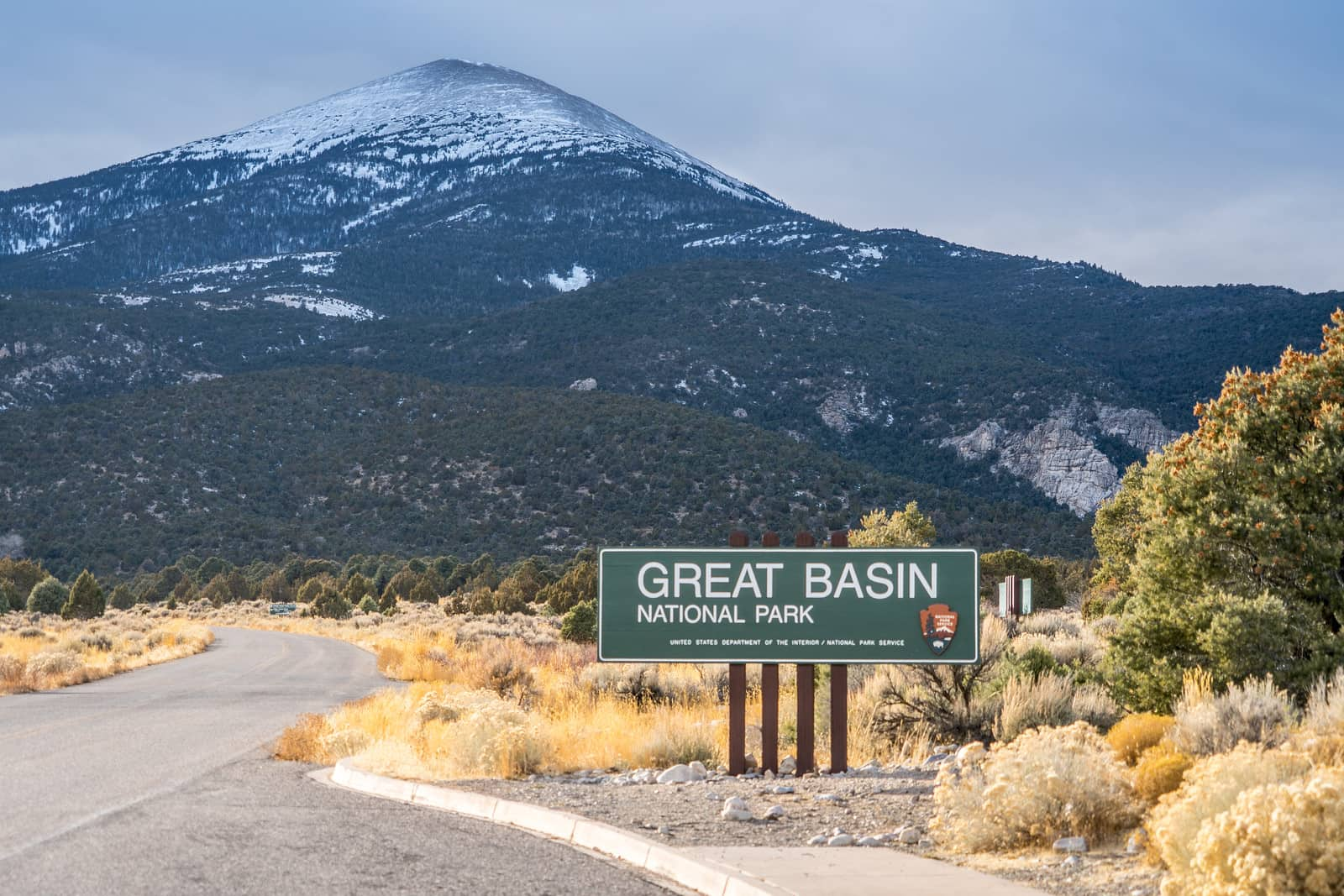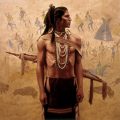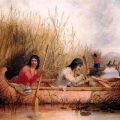
The Great Basin Culture Area includes the high desert regions between the Sierra Nevada and the Rocky Mountains. It is bounded on the north by the Columbia Plateau and on the south by the Colorado Plateau. It includes southern Oregon and Idaho, a small portion of southwestern Montana, western Wyoming, eastern California, all of Nevada and Utah, a portion of northern Arizona, and most of western Colorado. This is an area which is characterized by low rainfall and extremes of temperature. The valleys in the area are 3,000 to 6,000 feet in altitude and are separated by mountain ranges running north and south that are 8,000 to 12,000 feet in elevation. The rivers in this region do not flow into the ocean, but simply disappear into the sand.
The basic Indian tribes of the Great Basin Culture Area include Bannock, Gosiute, Mono, Northern Paiute, Panamint, Shoshone, Southern Paiute, Washo, and Ute. All of these, with the exception of the Washo, spoke languages which belong to the Numic division of the Uto-Aztecan language family.
Among the Shoshone, the first 30 days following birth were viewed as an extension of the time in the mother’s womb. During this time, the mother and child would stay in a house where a fire was maintained day and night. The fire was a symbol of the warmth and life of the mother’s womb. During this time, according to Drusilla Gould and Maria Glowacka, in an article in Ethnology:
“a Shoshoni mother was aware that her thoughts, feelings, behaviors, and diet could directly affect the baby’s development in either positive or negative ways.”
The Shoshone viewed the newborn as fully capable of understanding, learning, and memorizing and therefore mothers would speak to their newborns as they would speak to an adult. Drusilla Gould and Maria Glowacka point out:
“The children who could not communicate verbally and were confined within their thoughts were regarded as special persons because of their close connections to spiritual power of the Creator.”
The Shoshone father’s role in the birth of a child was to run to the nearest flowing water and jump in. This action would allow the child to be physically strong and healthy as well as being fast paced and alert.
Following birth, the Great Basin tribes placed the child in a cradleboard. Among the Shoshone, the cradleboard was never allowed to lie flat and the child was never left alone. Shoshone cradleboards were made from willow which was then covered with either white buckskin (Lehmi Shoshone) or smoked buckskin (Western Shoshone). Drusilla Gould and Maria Glowacka report:
“Willow represented long life and endurance and its energy was believed to blend with the child’s energy.”
Among the Shoshone, the act of lacing a child into the cradleboard was a spiritual act in which the mother would place protective prayers around her baby in a protective shield. The mother would bless the child with good thoughts for the future. When the laces were undone, the child was opened to the outside world and the mother would bless the child with words. According to Drusilla Gould and Maria Glowacka:
“Everything the child experienced and learned when being unlaced, not confined, was put together in a form of its memory.”
As in other culture areas, the children tended to be indulged. According to anthropologist Marvin Opler, in his chapter in North American Indians in Historical Perspective:
“Breast feeding could continue episodically to ages like four or six, long after solid food intake began. Female breasts were regarded as feeding instruments rather than sexual objects, and a child might try a wet nurse at such an age.”
With regard to the Shoshone, Drusilla Gould and Maria Glowacka report:
“While breastfeeding, the mother was advised to be in a positive frame of mind in order to ensure the child’s emotional and spiritual growth. Negative feelings such as sadness or anger, was well as negative thoughts, could harm the baby.”
Children were not named at birth. The first name given to a child generally referred to the child’s personality traits or future development. Spiritual names were given to individuals to be used in ceremonial contexts. Among the Paiute, women were frequently named for flowers and flora. Among the Eastern Shoshone, people do not tell their own names.



Leave a Reply